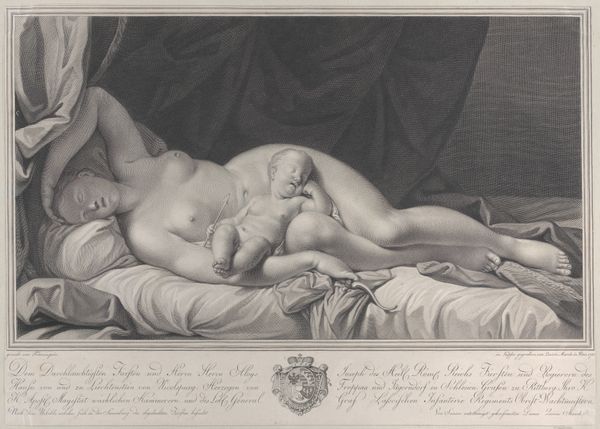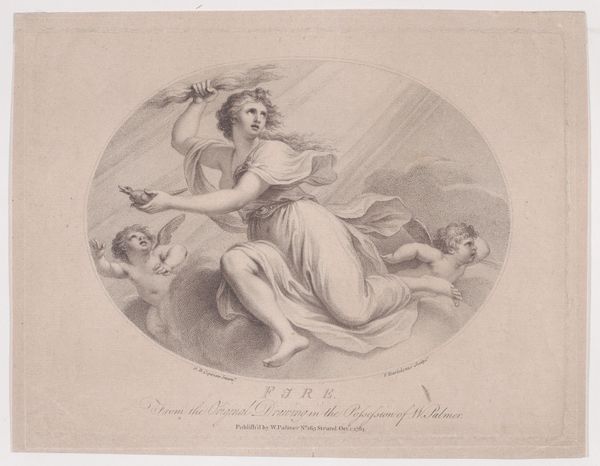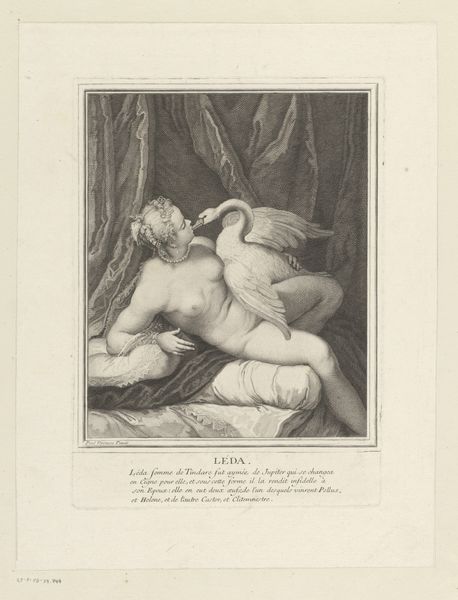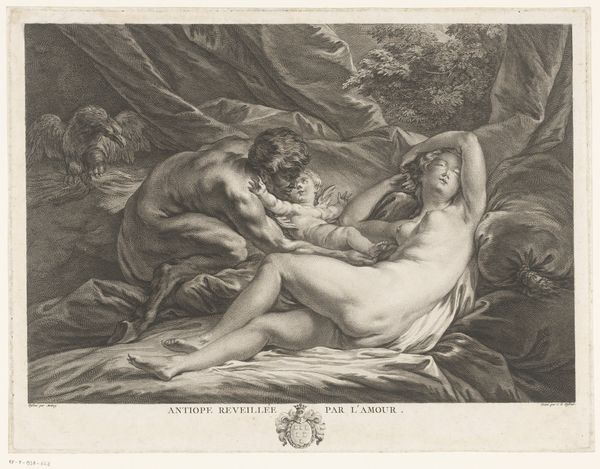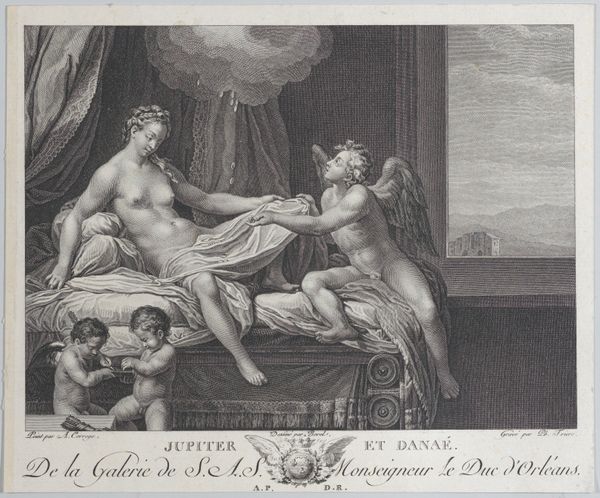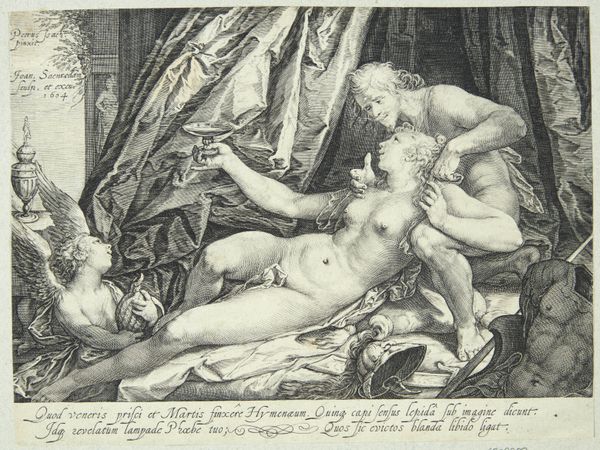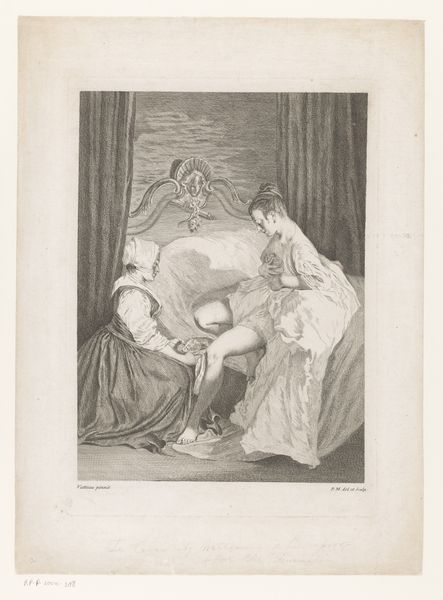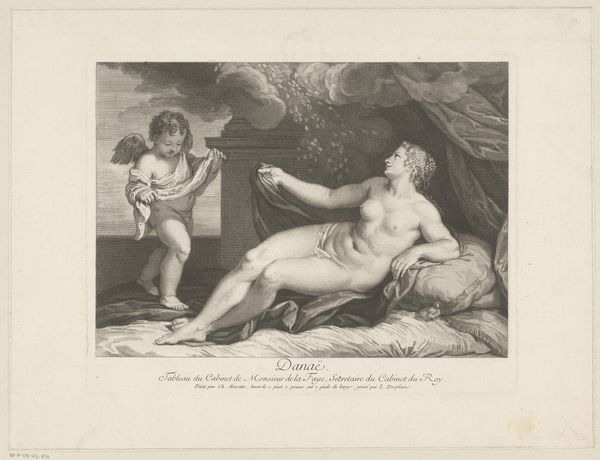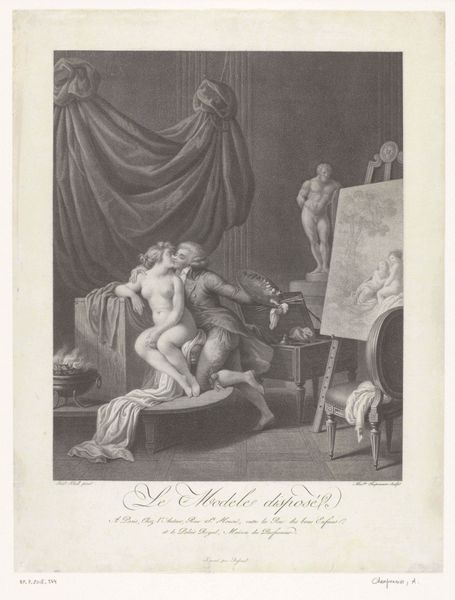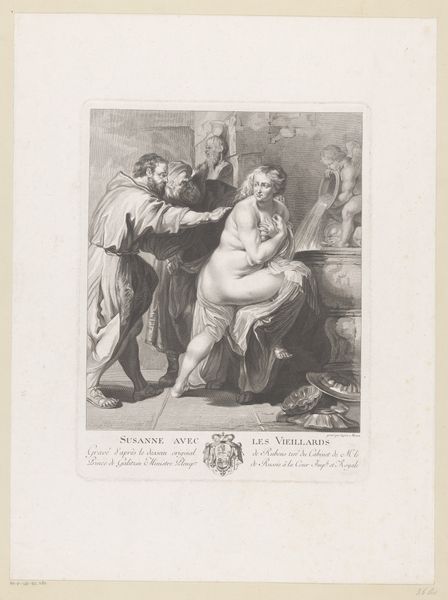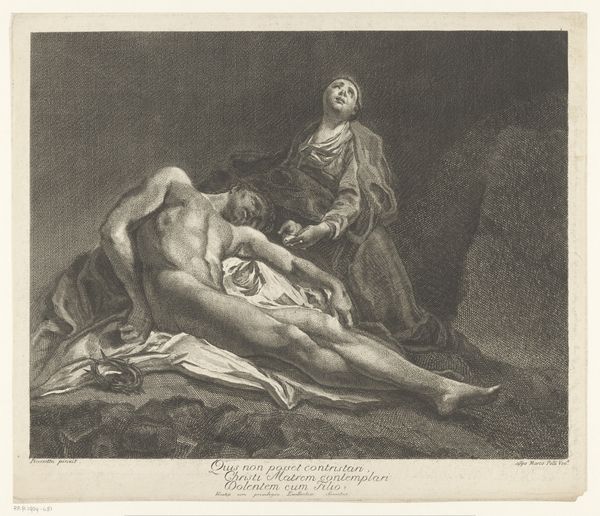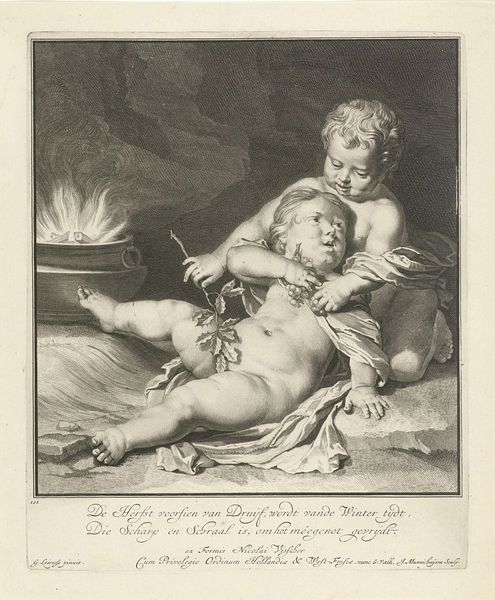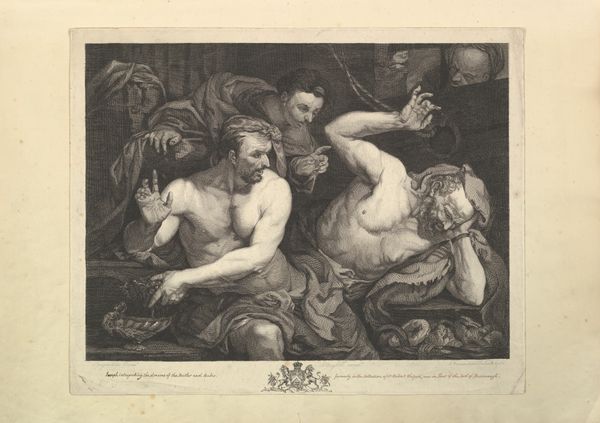
drawing, print, engraving
#
drawing
#
narrative-art
#
baroque
# print
#
history-painting
#
academic-art
#
nude
#
engraving
Dimensions: Plate: 14 × 16 7/8 in. (35.5 × 42.9 cm) Sheet: 15 3/4 × 20 11/16 in. (40 × 52.6 cm)
Copyright: Public Domain
Curator: Pieter Tanjé's 1752 engraving, "Tarquin and Lucretia," now housed at the Metropolitan Museum, presents a starkly lit scene rendered with meticulous detail. Editor: My initial reaction is one of unease. The tonal gradations of the engraving create a stark, almost theatrical space. The lines of the drapery, the sharp contrast on Lucretia’s figure—it all conveys a sense of impending violation. Curator: Absolutely. This is a pivotal moment ripped from Roman history. The narrative focuses on the rape of Lucretia by Tarquin, a crime that ignited a revolt and ultimately led to the overthrow of the Roman monarchy. Tanjé isn't merely depicting an event; he's participating in a discourse about power, vulnerability, and resistance. Consider, too, how Lucretia becomes a symbol of Republican ideals and female virtue in the face of tyranny. Editor: I see your point, especially concerning female virtue, though the very composition leans toward a more structural tension, perhaps even paradox. Note the spatial dynamics. Tarquin's imposing figure, stage right, occupies the center space while her vulnerable state is in the foreground as she reclines. It presents this push and pull, yet even within this balance, Lucretia seems boxed into her vulnerability due to her stark lack of support or leverage. The formal relationships underscore a reading of inescapable drama. Curator: The 'inescapable drama,' as you put it, stems from a context of absolute power. We must also account for race: the almost spectral presence of the servant situated stage left is meant to create not just a spatial contrast but a social one. He stands as witness, his inability to intervene highlighting the power dynamics at play, deeply embedding racial difference within the hierarchy of violation. Editor: A powerful point. In examining how it's visually communicated through light, and how light is blocked—is powerful. Tanjé uses the interplay of light and shadow to dramatize and enhance the narrative, framing each player in their unique circumstances, enhancing the spatial perspective overall. It draws our eyes towards a single story within a multitude of narratives. Curator: The choice of engraving itself, with its capacity for wide distribution, points to the didactic nature of such imagery within the broader socio-political context of 18th-century Europe, where revolutionary ideals were bubbling beneath the surface. It becomes a rallying cry against absolute authority. Editor: Precisely. Beyond historical accounts, this piece creates the formal conditions of meaning as a symbolic lesson for many eras. Curator: Ultimately, this image is a reminder of art's capacity to engage with complex social issues, forcing us to confront uncomfortable truths about power, gender, and justice. Editor: Agreed. The historical record and masterful technique invite layered analysis, beyond any surface aesthetic appreciation.
Comments
No comments
Be the first to comment and join the conversation on the ultimate creative platform.
